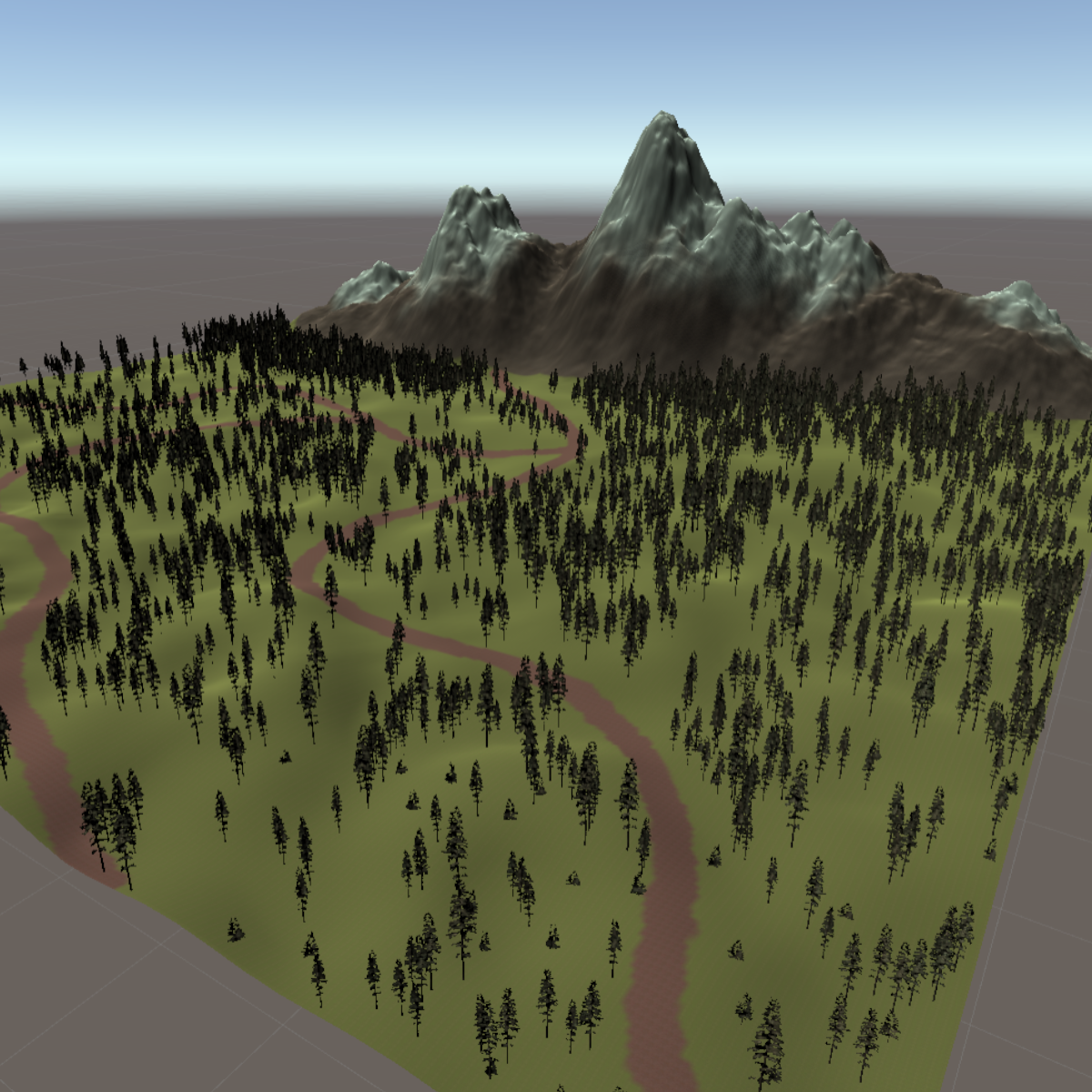Back to Courses









Computer Science Courses - Page 75
Showing results 741-750 of 2309

Image Compression with K-Means Clustering
In this project, you will apply the k-means clustering unsupervised learning algorithm using scikit-learn and Python to build an image compression application with interactive controls. By the end of this 45-minute long project, you will be competent in pre-processing high-resolution image data for k-means clustering, conducting basic exploratory data analysis (EDA) and data visualization, applying a computationally time-efficient implementation of the k-means algorithm, Mini-Batch K-Means, to compress images, and leverage the Jupyter widgets library to build interactive GUI components to select images from a drop-down list and pick values of k using a slider.
This course runs on Coursera's hands-on project platform called Rhyme. On Rhyme, you do projects in a hands-on manner in your browser. You will get instant access to pre-configured cloud desktops containing all of the software and data you need for the project. Everything is already set up directly in your internet browser so you can just focus on learning. For this project, you’ll get instant access to a cloud desktop with Python, Jupyter, and scikit-learn pre-installed.
Notes:
- You will be able to access the cloud desktop 5 times. However, you will be able to access instructions videos as many times as you want.
- This course works best for learners who are based in the North America region. We’re currently working on providing the same experience in other regions.

Create a Database with LibreOffice Base
By the end of this project you will have used LibreOffice Base to create a relational database table and populate it with rows of data. Base provides features that allow you to work with databases using wizards that lead you through the processes step-by-step. It also provides methods of working with database components directly, giving you the additional measure of control and flexibility you need to create a custom-designed database.
Note: This course works best for learners who are based in the North America region. We’re currently working on providing the same experience in other regions.

Test Your Build in the Debugger with IntelliJ IDEA
In this 1.5 hours guided project. You will learn how to use the debugger in IntelliJ IDEA to test the builds of your code. Topics covered include using the integrated debugger, break points, stepping, watches, modifying the execution flow, and object examination. Basic development experience including working with objects in Java with IntelliJ IDEA is required as a prerequisite.

Managing Cloud-native Applications with Kubernetes
Managing Cloud-native Applications with Kubernetes (DO100b) is designed for IT professionals without previous cloud application deployment experience to learn basic Kubernetes skills. This course is the second course of a three-course specialization. In this specialization, you will run, deploy, and test containerized applications with zero-downtime releases.

Visual Communication through zines using Scribus & Issuu.com
By the end of this project, you will learn how to use Scribus to create a short digital zine. Scribus v 1.4.8 is a desktop publishing software which is currently providing a valid Open Source alternative to the mainstream desktop publishing software, such as Indesign. It is a valuable option for those who want to broaden their software knowledge and train their skillset in terms of editorial production practising with this free tool available to be downloaded to any desktop. Digital zines are the current evolution of traditional zines, both recognised as powerful tools of Visual Communication. Originally born as a form of self-expression, zines are characterised by small-circulation and self-publishing, peculiarities that give traditional zines a distinctive “Lo-Fi” aesthetic. Their contents can be original or appropriated texts and images. Zines aim to divulge art, cultural or social issues, abstract concepts or in the case of “fanzines” to talk about specific phenomena of which the authors are enthusiasts. Having a wider circulation due to the fact that they can be printed or shared online, Digital zines nowadays keep the purposes of traditional ones plus they are largely used as digital portfolios for practitioners or companies, event and product catalogues, instructional or educational manuals, marketing and editorial material. As a starting point to explore the potentialities of digital zines, the learners can become familiar with this form of Visual Communication, in order to reach a broader public to whom they share their contents.

Create Landscapes in Unity Part 1 - Terrain
In this one-hour, project-based course, you'll learn how to create and design landscape settings, using the Unity terrain component. You'll learn how to create and paint texture layers on your terrain. You'll learn how to add premade trees and grasses to add more details on your terrain environment.
The guided project will introduce you with the following Unity concepts:
-Terrain
This is Part 1 of a three-part series on creating landscape settings. Part 2 covers on creating manually a tree and setting up a wind effect that will be added on the terrain. Part 3 continues in adding Terrain related objects such as flowers, bushes, and lake.
Note: This course works best for learners who are based in the North America region. We’re currently working on providing the same experience in other regions.

International Cyber Conflicts
By nature, cyber conflicts are an international issue that span across nation-state borders. By the end of the course, you will be able to apply the knowledge gained for analysis and management of international cyber incidents and conflicts including for activities such as development of policy related to cybercrime and cyberwarfare. Management of cyber incidents and conflicts requires an interdisciplinary perspective including an understanding of: 1) characteristics of the cyber threats and conflicts themselves, 2) international efforts to reduce and improve cyber security, and 3) psychological and sociopolitical factors.
The course is designed to reach an international audience and will encourage discussion on relevant current events among participants to enrich the experience with various personal and cultural perspectives on cutting-edge issues. In addition, assignments and other assessments will supplement video lectures and selected readings to ensure application of the material.
After taking this course you will be able to:
• Identify different types of actors involved in cyber threats (individuals, organizations & nation-states)
• Distinguish between different types of threats and issues in cyber security including, data theft, political espionage, critical infrastructure protection, and propaganda
• Detail the basic characteristics of the Internet infrastructure and international efforts to address Internet governance
• List several international efforts to address cyber crime and espionage
• Evaluate how principals that govern international conflicts might be applied in context of cyber security
• Apply different psychological theories of human motivation and cooperation and communication and political theories in analysis of different international issues related to cyber security including censorship, media operations and role of social technologies.
Grading:
Your grade is assessed based on discussion posts and quizzes. Individual taking this course for credit (i.e. students at the University at Albany y will be required to engage in additional activities communicated to them directly).
Recommended Background:
No background knowledge or skills are necessary, but an understanding and familiarity of cyber security, Internet infrastructure and international law would be advantageous for anyone who participates in the course.
ACKNOWLEDGEMENTS
Ersin Dincelli and Nic DePaula were the instructional designers for the course who assisted in the recording of the videos, reviewing material, creating slides, assessments and some of the content. Without their tremendous effort this would not have been possible. We also acknowledge the financial support for the recordings from the University at Albany as well as the support from Media and Marketing. Finally, thanks to Lisa Stephens who is the SUNY liaison to Coursera for being a strong supporter of the MOOC.

Introduction to Risk Management
In this course, you will learn about risk assessment techniques and how to implement a number of strategies that will ensure the protection of assets. You will learn about the relationship between assets, vulnerabilities, threats, and risks. You will also engage with a number of current case studies in the industry that illustrate the material. You will leave the course with skills relating to threat modeling and business continuity planning that have direct applications at your current job or in your future career.

Cybersecurity Foundations for Risk Management
In order to manage the cybersecurity function business, you must first understand its language and its environment. This course covers the foundations of cybersecurity, including threats and vulnerabilities as well as the tools, technologies, and strategies used to manage it.
After completing this course, a learner will be able to:
● Define key concepts and terminology in Cybersecurity
● Identify threats to cybersecurity
● Identify strategies to identify and remediate vulnerabilities in information assets
● Identify the systemic components (including personnel) necessary for an effective cybersecurity program

Build an Automated Landing page using AI from Wix ADI
In this 1-hour long project-based course, you will learn how to design a lead generation landing page with a free ebook lead magnet to collect email addresses using Wix Artificial Design Intelligence. You will then use the Email Automation feature from Wix to send an automated email with an option to download the free ebook and a Call to Action to join a webinar where you as a marketer can then sell premium products. This lead generation strategy is highly effective with really high conversion rates if done right. By the end of this project, you will have a high converting automated landing page which you can post on your Youtube channel, Facebook groups, LinkedIn page or boost it through Facebook ads.
This guided project is beginner-friendly. You don’t need any experience in email marketing or web design to complete this project.
Note: This course works best for learners who are based in the North America region. We’re currently working on providing the same experience in other regions.
